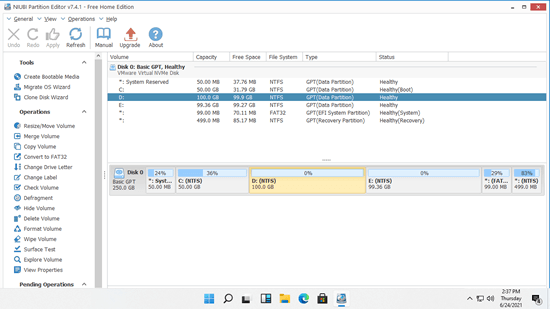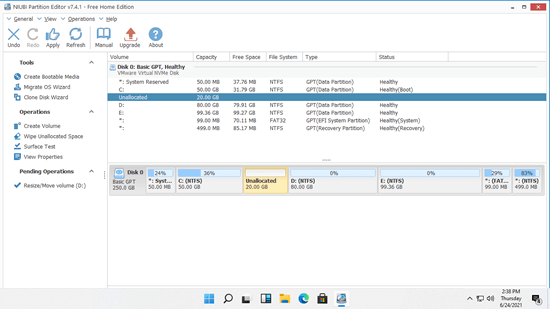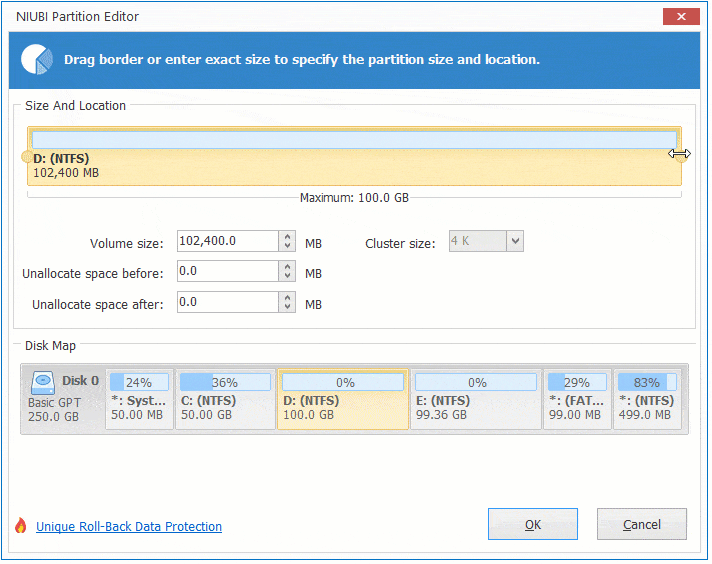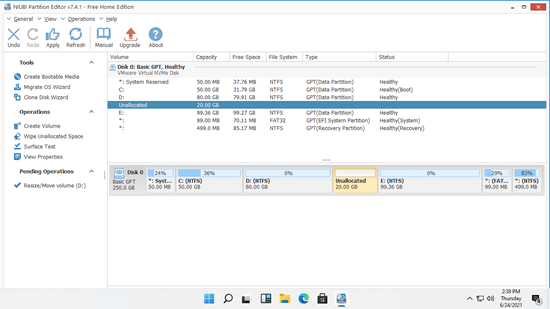No matter you install Windows 11 by yourself or purchase from a computer seller, the size of all partitions are allocated. But the scheduled partition size no longer meet the requirements after running the computer for a period of time. The typical example is that C drive is running out of space. Many people ask whether it's possible to adjust partition size in Windows 11 without reinstalling OS and programs. The answer is yes. To resize partition in Windows 11 laptop/desktop/tablet computer, you may use Windows native tool or free partition software. This article introduces how to resize Windows 11 partition with both kinds of tools.
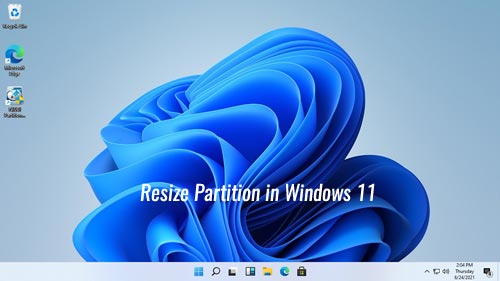
Change partition size in Windows 11 with Disk Management
The same with previous Windows 10, Windows 11 has a native Disk Management tool. Besides create, delete and format partition, Disk Management can adjust partition size without losing data (in most cases). However, because of many limitations, Disk Management is not the best tool to help resize Windows 11 partition. Actually, Disk Management can only be used to shrink NTF partition to create new volume, or extend NTFS partition by deleting the adjacent partition on the right. If you want to extend a volume by shrinking another one, Disk Management cannot help you.
How to resize partition in Windows 11 via Disk Management
- Press Windows + X keys together and then click Disk Management.
- Right click any NTFS partition and select "Shrink Volume".
- Enter an amount of space and then click Shrink button. If you don't enter an amount, all available free space will be used by default.
- Transfer all files in the right adjacent partition (such as D:) to other place.
- Right click this partition and select " Delete Volume".
- Right click the left contiguous partition (such as C:) and select " Extend Volume".
- Simply follow up the pop-up Extend Volume Wizard via several clicks.
Restrictions to resize Windows 11 partition with native tool
Firstly, you should know that Disk Management supports NTFS partition only. FAT32 and any other types of partitions can't be resized.
Other limitations include:
- It cannot shrink partition beyond the point where unmovable files are located.
- It can only shrink partition towards left and make unallocated space on the right.
- It can only extend partition when there's contiguous unallocated space on the right.
- It cannot move partition or unallocated space.
- It cannot resize system reserved, EFI and Recovery partition.
The major shortage of Disk Management is that it cannot extend volume by shrinking another one.
Resize partition in Windows 11 with free partition software
To resize volume in Windows 11 laptop/desktop/tablet, third party software is better choice. NIUBI Partition Editor has free edition for Windows 11/10/8/7/Vista/XP home computer users. Better than other tools, it has unique 1-Second Rollback, Virtual Mode, Cancel-at-will and Hot-Clone technologies to protect system and data. Because of the special file-moving algorithm, it is much faster to shrink, move and copy partition.
Download NIUBI free edition, you'll see all storage devices with partition layout and other information on the right. Right click any single partition or the front of disk, you'll see available operations, unavailable options are hidden automatically.
How to resize partition in Windows 11 computer with NIUBI Partition Editor:
Right click any NTFS or FAT32 partition (here is D:) and select Resize/Move Volume. You have two choices in the pop-up window.
Option 1: Drag left border towards right, or enter an amount of space in the box of "unallocated space before".
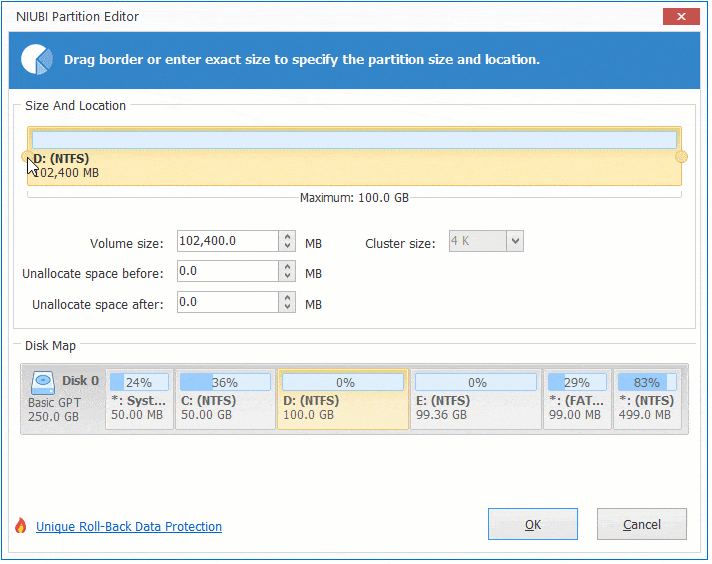
This partition will be shrunk to the right and unallocated space will be made on the left side.
After getting unallocated space, you may either create new volume(s) or combine it to other partition(s). If you want to extend C drive partition, follow Option 1 to shrink D drive and make unallocated space on the left. If you want to extend E drive, follow Option 2 to make unallocated space on the right of D drive. After that, follow the corresponding method:
To extend C drive: right click it and run Resize/Move Volume again, drag the right border towards right in the pop-up window, then unallocated space will be combined to C drive.
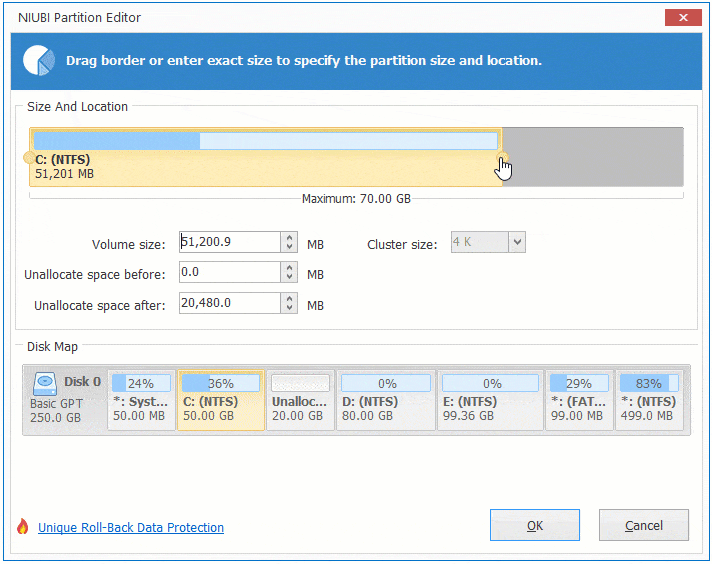
To extend E drive: right click it and run Resize/Move Volume again, drag the left border towards left in the pop-up window, then unallocated space will be combined to E drive.
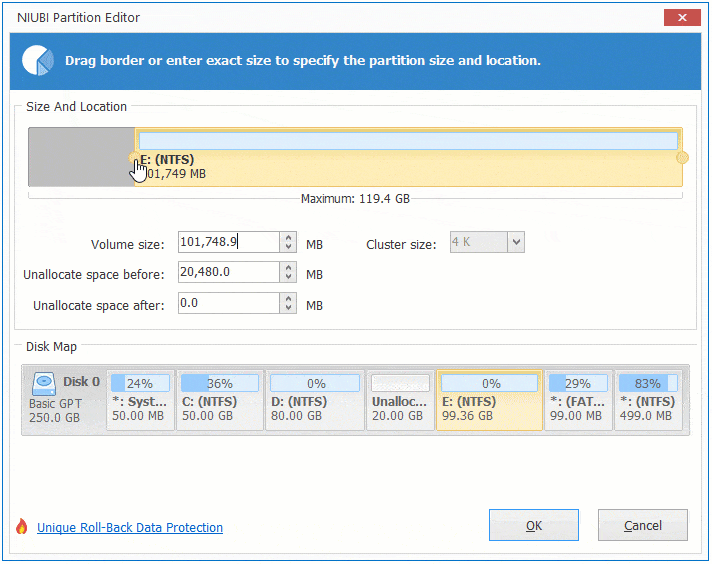
If you want to shrink nonadjacent partition E to extend C drive, there's an additional step to move partition D. Watch the video how to resize partition in Windows 11:
Besides resizing partitions in Windows 11/10/8/7/Vista/XP computer, this free partition manager helps you do many other disk partition operations such as move, merge, convert, defrag, hide, wipe partition, scan bad sectors, optimize file system and much more.

